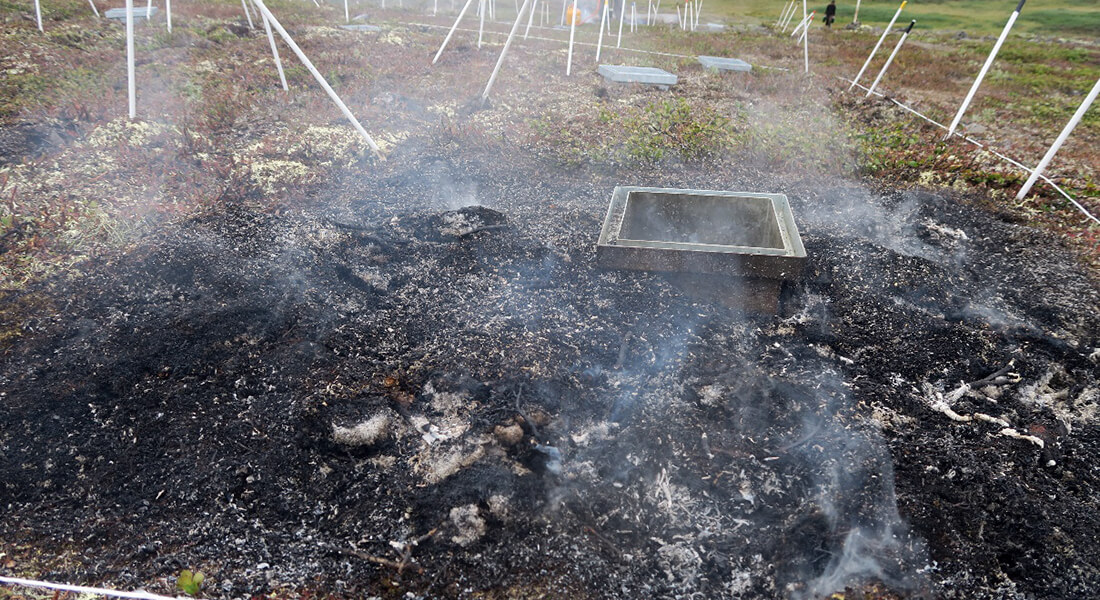Fire increases nutrient availability as well as N2O and CO2 production in Arctic tundra soils
Climate change is occurring rapidly at high latitudes, particularly in Arctic tundra regions. Rising summer temperatures or drought can extend conductive fire weather, and the frequency and extent of tundra fires have increased dramatically in the Arctic, which has high potential to alter ecosystem carbon (C) and nitrogen (N) stocks and cycling.

A recent study published in Science of the Total Environment investigates the effects of experimental low-intensity fire, in combination with warming, on soil biogeochemical cycles and post-fire greenhouse gas (GHG) emissions in a dry heath tundra, West Greenland. The study shows increases in soil nitrate, ammonium and phosphate concentrations two years after the fire. Soil N2O and CO2 production was higher in burned than unburned soils, while methane (CH4) uptake remained unchanged, two years after the fire. Furthermore, fire may decrease the temperature (2.5 ℃ warming) response in soil respiration and CH4 uptake, which could weaken this positive feedback to climate change.
Original article
Wenyi Xu, Anders Lambæk, Signe Skjold Holm, Annesofie Furbo-Halken, Bo Elberling, Per Lennart Ambus, 2021. Effects of experimental fire in combination with climate warming on greenhouse gas fluxes in Arctic tundra soils, Science of The Total Environment, 795:148847, https://doi.org/10.1016/j.scitotenv.2021.148847.
Contact
Wenyi Xu
Department of Geosciences and Natural Resource Management, University of Copenhagen
Per Lennart Ambus
Department of Geosciences and Natural Resource Management, University of Copenhagen
